Over the last few years, many food banks have made a conscious effort to adopt more inclusive messaging and creative into not only their day-to-day practices but also their fundraising materials.
As fundraisers, inclusivity is important because it helps address any unconscious bias, avoids ”otherizing” and better aligns with our beliefs and values.
Tonie Howard, our food bank team lead, does a great job diving into why DEI principles are important for food banks. Today, I’m going to focus on how you can implement those principles into your creative messaging by sharing a few examples we’re currently testing in the market.
It's important to note that examples are focused on food banks, but the same concepts can be applied to many different sectors in the nonprofit industry.
Staying out of judgement
Not everyone shares the same perspective as you, so it’s important to avoid jumping to conclusions about what people are going through. In Food Bank of the Rockies’ Root Out Hunger campaign, they do an excellent job of staying out of judgement of those experiencing food insecurity in the first few paragraphs of their appeal below.
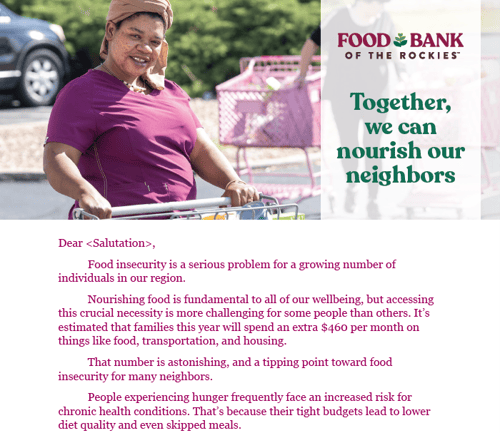
Common ground building
We’re all vulnerable to things out of our control—like hunger. The reality is, any one of us could find ourselves in the same situation as Helen in Second Harvest Foodbank of Southern Wisconsin’s appeal below. By explaining the rapidly rising cost of living and the tough decisions it’s causing Helen to make, the donor is put into her shoes.
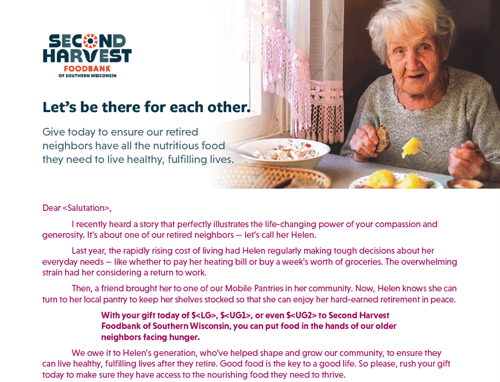
Belonging and community building
Another essential part of DEI is giving dignity to all members of the community you serve. In their award-winning Woman to Woman campaign, Food Bank For New York City sheds light on gender inequality and how poverty impacts women, girls, transgender, genderqueer, non-binary and gender nonconforming individuals who need access to food, menstrual care products and other resources they need to live.
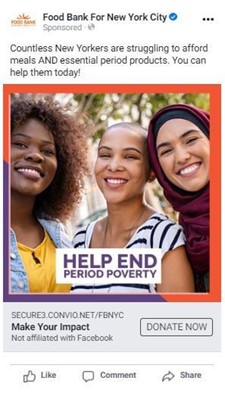 The same can be said for this digital matching gift campaign from Food Bank of Central and Eastern North Carolina. In an effort to create an inclusive presence so that all communities feel represented and welcomed, this campaign was inclusive of the LGBTQ community by featuring a family with two dads.
The same can be said for this digital matching gift campaign from Food Bank of Central and Eastern North Carolina. In an effort to create an inclusive presence so that all communities feel represented and welcomed, this campaign was inclusive of the LGBTQ community by featuring a family with two dads.
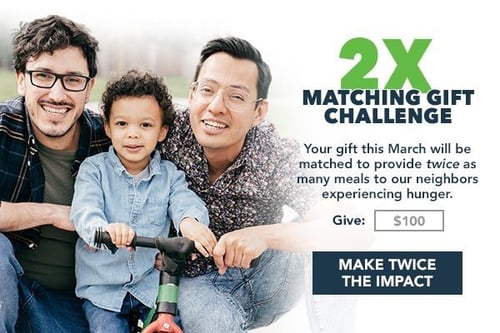
Not defining someone by their situation
Food insecurity doesn’t define someone or reflect a flaw in them as a person. Instead, it’s a circumstance that they’re currently going through. In this food bank copy, we see how avoid defining someone by their circumstance by using terms like “neighbors facing hunger.”

Finally, I want to acknowledge that this isn’t an easy shift for some. But it’s a critical one. Incorporating inclusive language is taking a stand and sharing your values as a food bank. The key throughout it all is to keep an open mind, respect the feelings of others and stay consistent.
If you’re looking for more examples, I recently hosted a webinar on inclusive and effective messaging that shared a few additional insights and ways to incorporate this into your program. You can watch the recording below:

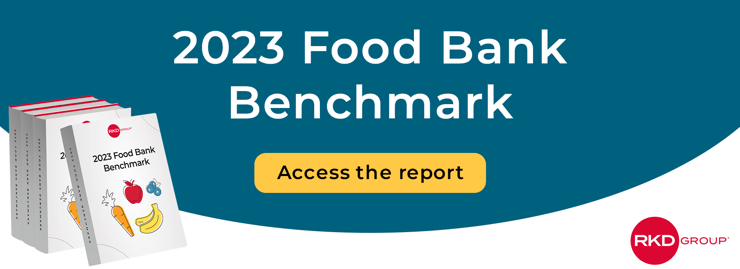




Leave a comment: